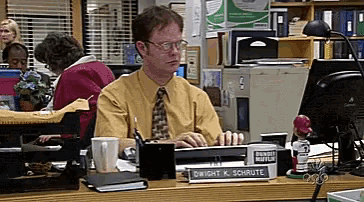You’ve been running an SEM (search engine marketing) or SEO (search engine optimization) campaign with a partnering agency. At the end of the month, they send you PDFs with LOTS of acronyms, numbers, charts and graphs and say, “Our Campaign is doing great!” But it’s hard for you to decide that for yourself as you attempt to digest this overabundance of information.
While the KPIs for your business may vary depending on the type of industry you are in, there are a handful of metrics that can give you a good baseline of success. Let’s look at some metrics and how they can indicate your performance.
Breaking Down SEM
Click-Through Rate (CTR)
Click-Through Rate (CTR) measures how often your ad was clicked after it was served to users. A high CTR indicates that your ads are effective with the keywords you’re bidding on and are successfully driving users to your site. In contrast, a low CTR could means fewer users clicked on your ad after seeing it. This could indicate poor quality ads or improper campaign targeting.
Each industry has its own average CTR that you can measure against to get a sense of your performance based on your unique industry. This could range anywhere from 2.7% to 6% so it’s important to take that average into account when judging your own CTR
Having a healthy CTR is the first step to a successful SEM campaign. If you have less customers coming in the door, you’ll have even fewer customers completing those valuable conversions.
Conversion Rate
Your Conversion Rate measures how often a conversion was completed on your website from users who clicked on your ad. Conversions are valuable actions users trigger on your site, like a lead form submission, phone click, or completing a purchase.
It’s critical that your SEM campaigns are producing relevant conversions on a consistent basis. Paying for an SEM Campaign that isn’t providing you valuable website actions is like paying for thousands of window shoppers to visit your store. Having more people visit your website is always great, but if they aren’t contributing to your bottom line, you’ll be burning through funds very quickly.

If your SEM campaigns have a high CTR but a low conversion rate it could indicate that you’re not driving the right people to your website. Or it could be that your conversions are not as streamlined as they could be and users are failing to make it through your sales funnel.
No matter what the underlying cause may be, an SEM campaign with a low conversion rate should be addressed sooner rather than later to turn those window shoppers into paying customers.
Search Top Impression Share
Search Top Impression Share shows you the impressions you’ve received in the top location of the search results divided by the estimated impressions you were eligible to receive. This indicates how often your ads are appearing above the organic search results on Google.
When it comes to where your ads appear in the search results, the higher the position the better! When’s the last time you clicked on the 12th search result in Google?
Having a low Search Top Impression Share means that your ads are appearing below the organic search results more and other advertisers are taking those slots. This could be caused by improper targeting settings, low bids, or low ad quality.
If your ads aren’t showing in those prominent slots you may need to edit your targeting settings, improve your ad quality, or increase your overall spend to be more competitive in the SEM space in your industry.
Fighting for those top ad slots helps your ads get more visibility. And the more people see your ads, the more likely you are to get that conversion!
Breaking Down SEO
Website Traffic
The meat and potatoes of any SEO campaign is answering this question – “Are we driving an optimal amount of traffic to our website?” For your website to produce tangible results for your business, you need to have the website traffic to make that happen!
The question you then must ask is “What do I consider an ‘optimal’ amount of traffic for my website?” Is it a 30% increase from where we are today? Or is it 300%? The answer to this question will help you and your partnering agency decide which initiatives to undertake and how aggressive you need to be to reach your goals.
Defining these expectations upfront helps clarify where you want to be and dictates the means in which your SEO campaign can get you there.
Keyword Rankings
As you continue to expand your website, address issues, and publish content, how do you know that your SEO efforts are pushing you in the right direction? Is your website trending higher in the search results for queries related to your business?
Tracking keyword rankings helps you gain this valuable insight about your website’s performance. You can see which search terms you are trending up in rankings and identify which terms are opportunities for improvement.
Let’s say you’re a local hardware store. Naturally you’d want your website to rank higher for people searching online for ‘hardware store near me’, ‘local hardware supplies’, etc.
Tracking your ranking on queries relevant to your business can re-affirm your SEO efforts and help you identify what content topics you want to focus on.
Bounce Rate
While the total amount of users is important, you want to make sure those users are interacting with the page, reading your content, and triggering those valuable conversions. If a user navigates to your website, doesn’t interact with the page, and navigates away from your website, that is classified as a ‘Bounce’.
Your Bounce Rate gives a percentage score of how many single-page sessions happened on your website during the specified time. If your Bounce Rate is low, that means website visitors are reading your content and clicking to other pages on your site. If your Bounce Rate is high, most of your users are existing your pages without taking any action on it.
A high Bounce Rate likely means that your web pages could benefit from some adjustments to the structure and content. Try to make changes that enhance the experience for the end user and make the funnel path to those valuable conversions easier.
Adding more descriptive/impactful headlines, removing unneeded content, and leveraging visual content like photos and videos could help you improve your Bounce Rate in some instances.

Unfortunately, there is no ‘Magic Formula’ that is guaranteed to decrease your Bounce Rate. Having a high Bounce Rate is a symptom of a larger problem that you and your team will have to address.
There is one caveat to consider on bounce rate, which is when the goal of the page is to send the user to another website. For example: you use a third party hiring application and the goal of your pages is to get users to the application. In this case, a high bounce could be a positive indicator. Coming to your site and immediately going to the application will increase your bounce rate, but as long as you are getting applications this is a good thing. It all comes back to understanding your goals and paying attention to the metrics that matter to your business.
Finishing Up
Hopefully now you have a better understanding of some important SEO & SEM metrics so you can better gauge your own success. Pay close attention to these metrics on a regular basis as they can help guide your campaign strategy and better direct your efforts.




